Bulbs
Flower Basics
Flower Beds & Specialty Gardens
Flower Garden
Garden Furniture
Garden Gnomes
Garden Seeds
Garden Sheds
Garden Statues
Garden Tools & Supplies
Gardening Basics
Green & Organic
Groundcovers & Vines
Growing Annuals
Growing Basil
Growing Beans
Growing Berries
Growing Blueberries
Growing Cactus
Growing Corn
Growing Cotton
Growing Edibles
Growing Flowers
Growing Garlic
Growing Grapes
Growing Grass
Growing Herbs
Growing Jasmine
Growing Mint
Growing Mushrooms
Orchids
Growing Peanuts
Growing Perennials
Growing Plants
Growing Rosemary
Growing Roses
Growing Strawberries
Growing Sunflowers
Growing Thyme
Growing Tomatoes
Growing Tulips
Growing Vegetables
Herb Basics
Herb Garden
Indoor Growing
Landscaping Basics
Landscaping Patios
Landscaping Plants
Landscaping Shrubs
Landscaping Trees
Landscaping Walks & Pathways
Lawn Basics
Lawn Maintenance
Lawn Mowers
Lawn Ornaments
Lawn Planting
Lawn Tools
Outdoor Growing
Overall Landscape Planning
Pests, Weeds & Problems
Plant Basics
Rock Garden
Rose Garden
Shrubs
Soil
Specialty Gardens
Trees
Vegetable Garden
Yard Maintenance
How to Build an Inexpensive Hydroponics System
How to Build an Inexpensive Hydroponics System. Building a hydroponics system is an inexpensive way to create a vegetable and herb garden. The necessary materials are inexpensive and available at home improvement stores. One of the best systems is the lettuce raft. Start your lettuce seeds in the grow plugs in a small container. When your seeds...
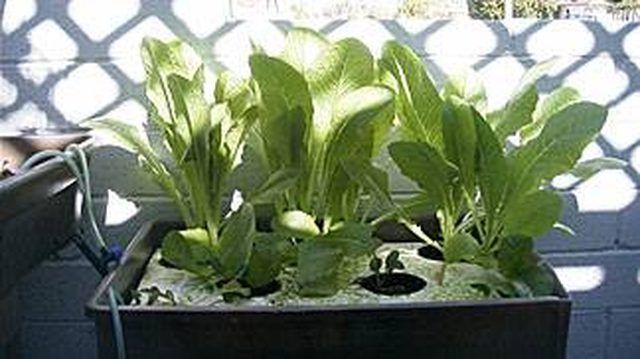
Building a hydroponics system is an inexpensive way to create a vegetable and herb garden. The necessary materials are inexpensive and available at home improvement stores. One of the best systems is the lettuce raft. Start your lettuce seeds in the grow plugs in a small container. When your seeds have sprouted, they will be ready to be placed in the lettuce raft.
Things You'll Need
Plastic container
Styrofoam
Electric knife
Net Pots
Air stone
Air pump and tubing
Determine a location for your hydroponics system. You will need a power supply for running the pump. If you choose an indoor location, you will also need to provide electrical power for lighting.
Build your first component. Cut a piece of styrofoam measuring 1/4 inch smaller than your plastic container. For a 24 inch by 12 inch container, then, cut your Styrofoam to measure 23 3/4 inches by 11 3/4 inches.
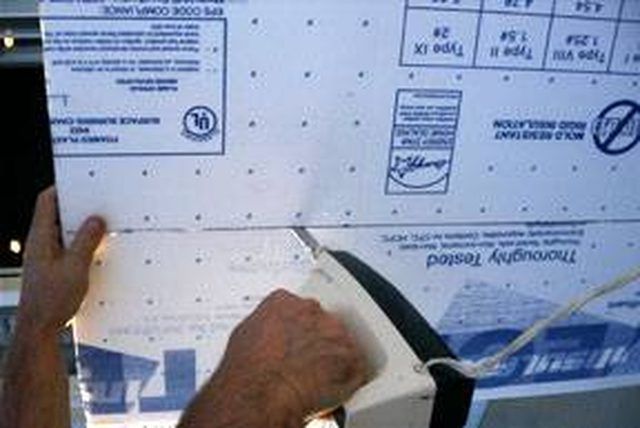
Using a net pot as your guide, mark out where to cut holes from the styrofoam; the holes should be four inches apart. Cut one hole and put in a net pot to ensure a tight fit. Adjust the size if necessary and continue to all the holes are cut.
Put the air stone in the plastic container and connect it to the tubing for the air pump. Do not put the air pump into the container.
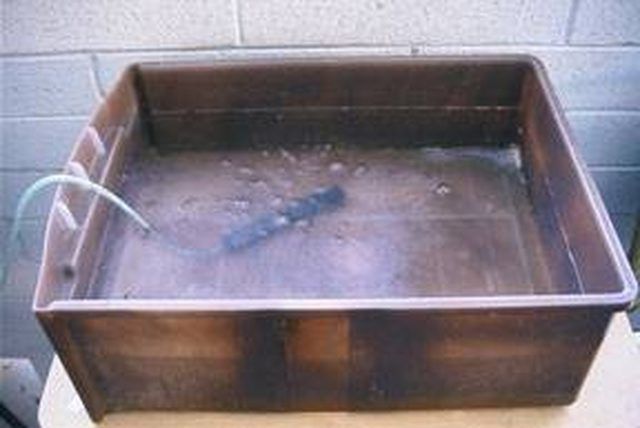
Fill the container with water and mix in the nutrients. Follow the manufacturers instructions for the nutrients. Place the styrofoam on the water's surface; it should float level with the top of the container.
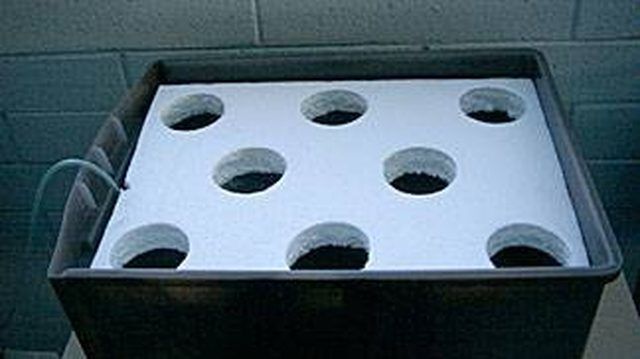
Plug in the pump to ensure the system is connected. The water should bubble or ripple within the container.
Place the net pots with your seedlings in the holes. The top of the net pots should be level with the exposed surface of the Styrofoam.
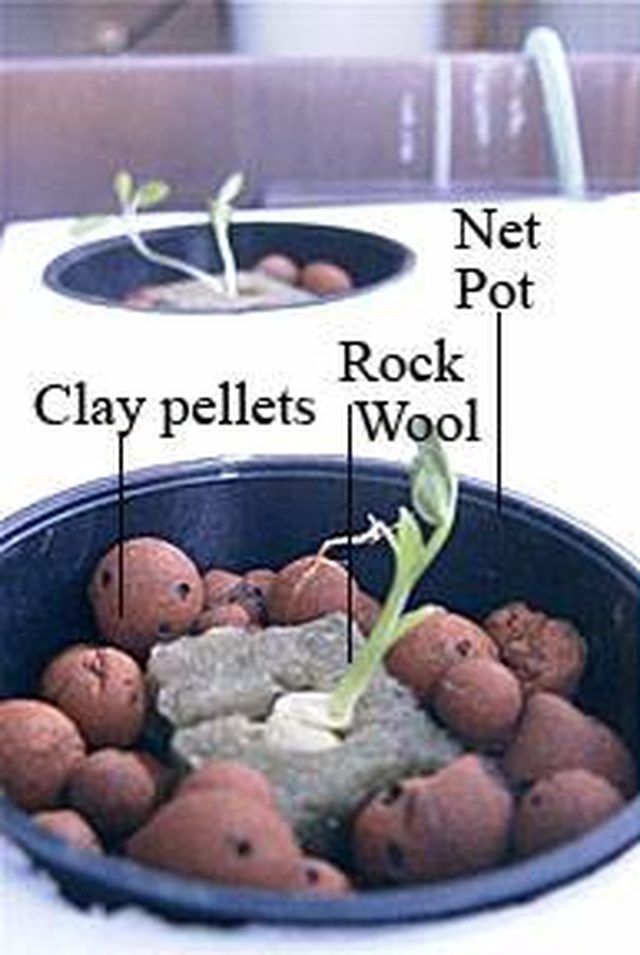
Add as many lettuce rafts as you desire. Each raft can run on its own pump, so you need only use a power strip or other form of electrical outlet to power the pumps.
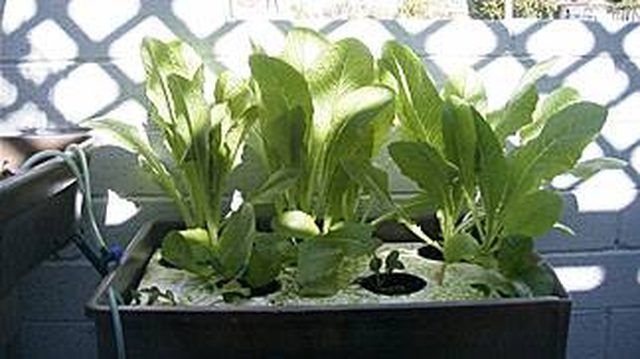
Tips & Warnings
Use an electric knife to cut your Styrofoam.
Use dark colored containers to reduce algae build-up.
The one time investment of a lettuce raft is between fifteen and twenty dollars. The only recurring cost is the nutrients.